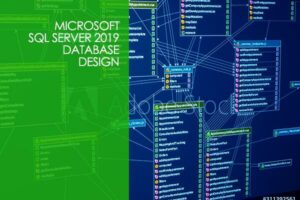Course Overview

Course objectives
You will learn the benefits and the requirements for generating useful indexes in both OLTP (transactional) and OLAP (reporting) databases. Another major benefit of business-focused RDBMS (Relational Database Management Systems) is the use of enforced relationships and constraints. This course will cover all the standard techniques to maintain consistent quality data in your database using referential integrity and various types of automatic data validations. One way of increasing both security and performance in a database is using stored procedures, functions, and triggers.
Modules
Module 1: Designing and Building Tables
- 1.1 Course Introduction
- 1.2 Module 1 Introduction
- 1.3 Introduction to Database Design
- 1.4 Creating Tables
- 1.5 Data Types
- 1.6 Schemas
- 1.7 Altering Tables
Module 2: Enforcing Data Integrity
- 2.1 Module 2 Introduction
- 2.2 Introduction to Data Integrity
- 2.3 Data Domain Integrity
- 2.4 Implementing Data Domain Integrity
- 2.5 Implementing Entity and Referential Integrity
Module 3: Indexing
- 3.1 Module 3 Introduction
- 3.2 Core Indexing Concepts
- 3.3 Heaps, Clustered, and Nonclustered Indexes
- 3.4 Data Types and Indexes
- 3.5 Single Column and Composite Indexes
Module 4: Stored Procedures, Functions, and Triggers
- 4.1 Module 4 Introduction
- 4.2 Introduction to Database Programming
- 4.3 Creating Stored Procedures
- 4.4 Creating User-Defined Functions
- 4.5 Creating Triggers
Module 5: Blob and Filestream Data
- 5.1 Module 5 Introduction
- 5.2 Introduction to Binary Data
- 5.3 Considerations for BLOB data
- 5.4 FILESTREAM Example
- 5.5 File Table Example
Module 6: Full-Text Search
- 6.1 Module 6 Introduction
- 6.2 Introduction to Full-Text Search
- 6.3 Full-Text Catalogs
- 6.4 Full-Text Indexes
- 6.5 Full-Text Queries
Module 7: Azure vs On-Prem
- 7.1 Module 7 Introduction
- 7.2 SQL Server on Azure VM
- 7.3 Azure Managed SQL Instance
- 7.4 Azure SQL Database
- 7.5 Course Wrap Up
Modes of Learning
- Flashcards: Remember the “read and guess” games we used to play back then? Here’s to enhance what you learned. How does it work? A statement will be written on a flashcard, and you’ll need to guess the answer. Then flip it over to see if you answered it correctly. The cards continue, each with a random statement from the course that you took previously.
- Scatter: “Make Everything Disappear.” Turn the screen white and vanish it all but this time testing your knowledge and your time being monitored. Find the best match and click your way toward success. This brain teaser might give you a hard time! But education combined with games adds an element of fun to it.
- Learn: Here’s another. Read and choose the right answer. A game designed on a Multiple-Choice pattern. This kind of exercise boosts your confidence. When one option seems to be correct, you choose the other only for it to be the right option. The right option will welcome another statement, but don’t sweat! You are still learning.
- Speller: This fun-packed game is unique in its own way. Hear the term carefully and type it out on your screen. You think you are a pro at learning spellings of tricky terms. Test yourself out with this game. Could you hear it properly? If you could, were you able to write it?
We have found our students doing absolutely great by showcasing their certificates. Grab that certificate of yours before someone else does and get that recognition you deserve.
You best learn when you see it. Our easy-to-understand video content is in place for you. Watch the studying content and grasp all the concepts easily. With so many lectures and 3000+ hours of video content, find what suits your needs. These educational videos are designed to sharpen your experience with your training content. Our easy-to-understand video content is in place for you. Watch the studying content and grasp all the concepts easily.
In contrast to other e-learning services, our labs will let you exercise what you analyze in a real environment with a lot to choose from. This layout mirrors the traditional study room format which ensures you will recognize exactly the way to set up, manage and troubleshoot any environment.
Being a successful IT professional involves more than knowing key terms and concepts. You need to be able to “apply” your knowledge to real-world situations. At EZDA we quote, “Learn it to pertain to it.” So, why spend money buying the equipment when we got you all covered?

